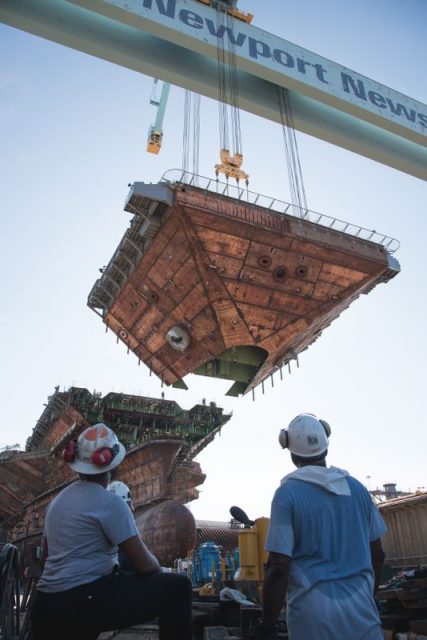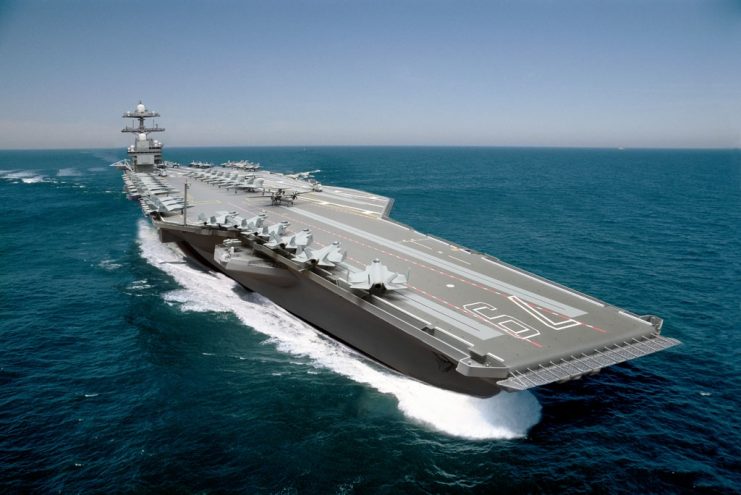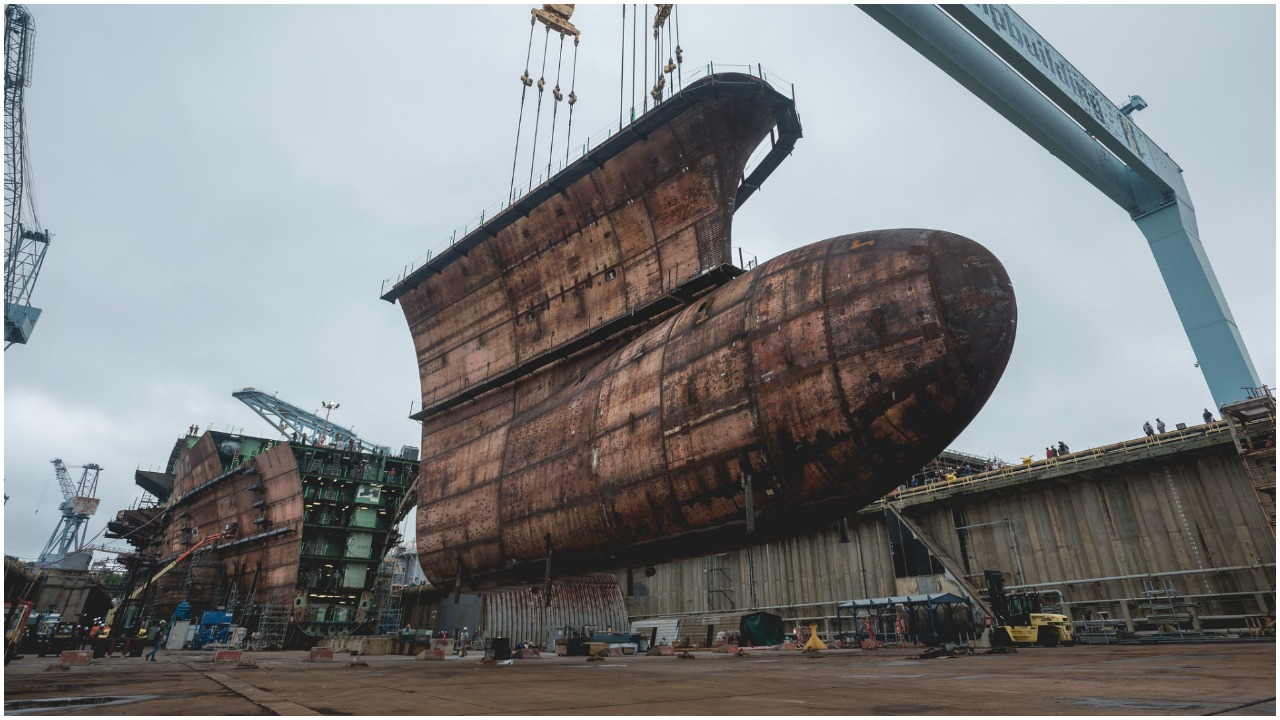The USS John F Kennedy is the second Gerald R Ford-Class aircraft carrier currently under construction for the US Navy and is due to be commissioned in 2020.
A recent milestone was achieved when the final super-lift was carried out, completing the primary hull and flight deck.
Despite being built using the very latest digital tools the process still employs more than three-thousand shipbuilders and uses contributions from more than two-thousand suppliers from across the USA.
However, the labour cost will be lower for this build than for previous projects.
Mike Butler, program director, is confident that the build is progressing ahead of schedule and is expecting to be able to christen the ship before the end of the year.
The contract for the construction of the ship was awarded in January 2009 and work officially started two years later. The keel was laid down in August 2015.

The USS John F Kennedy will be powered by two nuclear reactors and propelled by four shafts which will be able to push the hundred-thousand tonne ship at speeds of up to thirty-five miles per hour. It is expected to have an unlimited range and will be in service for at least twenty-five years.
The flight deck is full of new innovations designed to make re-fuelling faster and more efficient. The command island has been moved aft to release additional space for flight deck operations and the ‘bomb farm’ has been removed. Ordnance will be stored and issued from two complexes, fore and aft, from a level below the flight deck.
Future aircraft carrier #USSJohnFKennedy #CVN79 reaches 50 percent structural completion with lower stern’s addition. (Via @hiindustries) pic.twitter.com/oSGciDelRN
— U.S. Navy (@USNavy) June 24, 2017
All of the associated improvements to the flight deck are expected to increase the sortie rate while reducing the manpower required to service the aircraft.
The top sortie rate is expected to be in the region of 160 flights per day for thirty days, with a surge capacity of up to 270 in one day.
The new ship’s specifications are designed to make the human environment more ‘liveable’ with smaller berthing arrangements for just forty, rather than the 180 catered for in the older Nimitz class carriers.
This is in order to reduce foot traffic through common areas. Each berthing area will have its own wash-room facilities too.
#CVN79 grew 70 feet in length with the addition of the lower stern. The 2nd Ford-class aircraft carrier is now 50% structurally complete. pic.twitter.com/O6EhV6UiIK
— linceanalista_en (@linceanalistaEn) June 27, 2017
Other improvements feature dedicated, designed gym spaces, modern lounge areas, separated by corridors from sleeping areas, and mess rooms serviced via a wheel and spoke design to avoid problems encountered by long queues on earlier ships.
Wider passageways are expected to improve flow of personnel during drills and allow movement of sailors through areas where colleagues may be readying for action.

Armament includes two 32-cell RIM-162 Evolved Sea Sparrow Missile launchers and two RIM-116 Rolling Airframe Missile launchers, but the main firepower will come from the eighty aircraft on board. In a war situation, the ship can accommodate up to ninety combat aircraft.
During construction, the ship is put together in dry-dock using one-hundred and sixty-two super-lifts, with the largest weighing nine-hundred tonnes. The iconic command island weighs an incredible five-hundred and fifty tonnes alone and is super-lifted into position draped in the stars and stripes.
The command island was put in place during a ceremony that saw the placement of Kennedy dollars, challenge coins and the flight wings of Captain Todd Marzano, below the steel superstructure, entombing them within the body of the ship.
Captain Marzano is expected to be the USS John F Kennedy’s first commanding officer when it is delivered to the Navy as an operational warship in 2022.
Huntington Ingalls Industries, who are the sole designers and builders of nuclear powered aircraft carriers for the US Navy, have said in a statement that, despite additional demands on the construction budget, the final cost is expected to come in at least fifteen per cent lower than previous builds.
Another Article From Us: 75 Years After it Vanished, Divers Find USS Eagle 56
